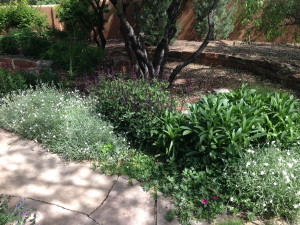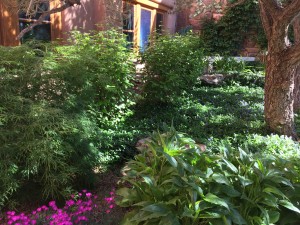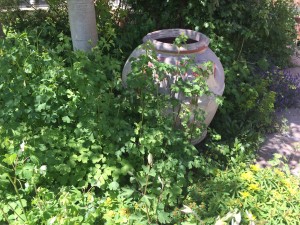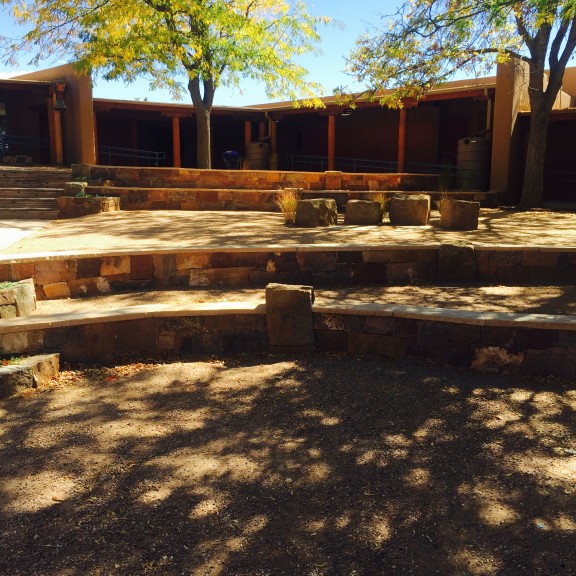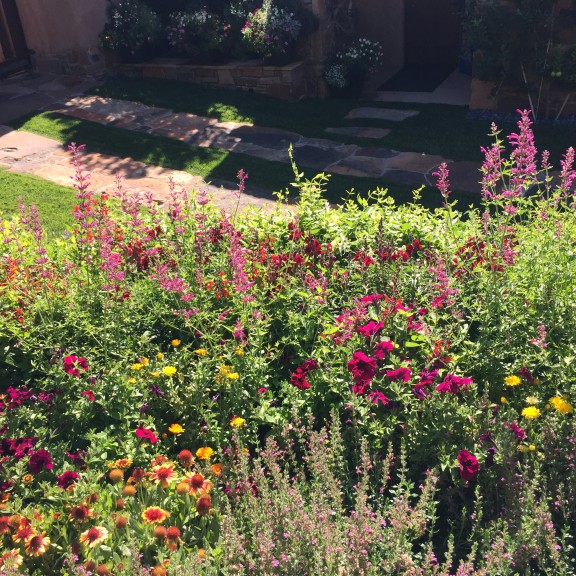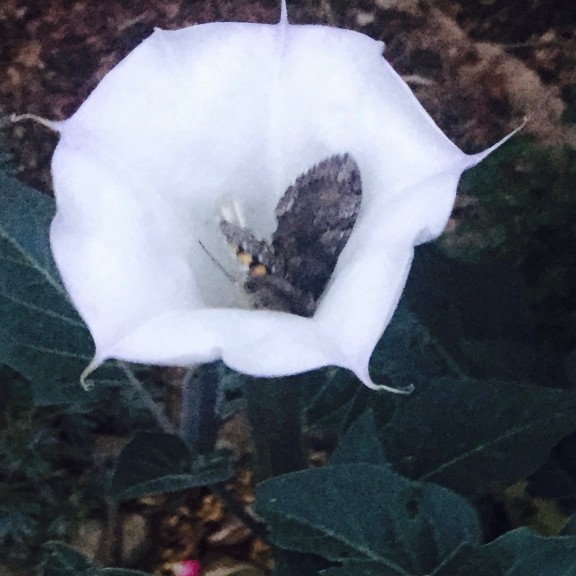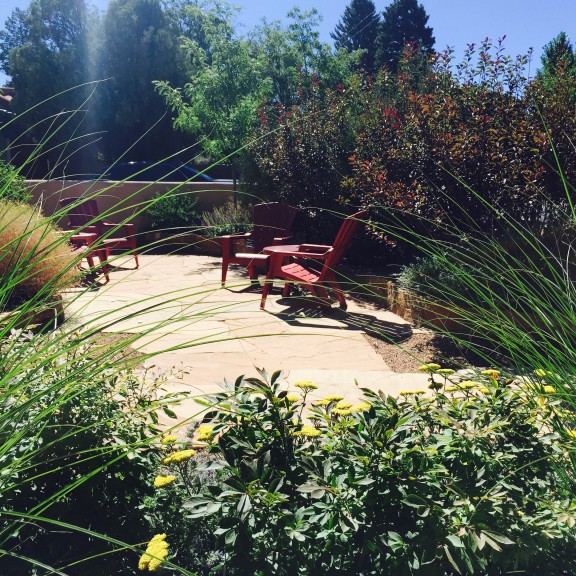Shade gardens in Santa Fe
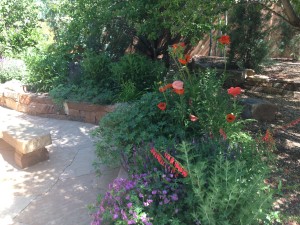 One problem that people often overlook in the southwest is the need for shade gardens. We all thing of xeriscape perennial gardens as bright heat and sun loving desert plants such as California poppies, and catmint. The problem that many of us have is that we have added shade elements such as gazebos and fences to our outdoor spaces to make them more pleasant places to be on summer afternoons.
One problem that people often overlook in the southwest is the need for shade gardens. We all thing of xeriscape perennial gardens as bright heat and sun loving desert plants such as California poppies, and catmint. The problem that many of us have is that we have added shade elements such as gazebos and fences to our outdoor spaces to make them more pleasant places to be on summer afternoons.
Since often we don’t want to be in the sun, we need flowers that don’t either. The selections for shade plants that thrive is our climate is slim, but broader than one might think.
Some of my favorites are lamium and aegopodium. Aegopodium is a spreading pale green leafed plant with white borders that gets about eight inches high. It occasionally has small white flowers, but the foliage itself will brighten up a dark shady area. White Nancy, lamium, is a small leafed groundcover, also with a lot of white in the foliage, that will also brighten up shade. Both of these plants can be quite stunning if planted in a large mass. IT takes some sacrifice of color, but the whites and variegated foliages are also very pretty.
For a mixed shade perennial garden, try plants like columbine, astilbe, bleeding hearts, hostas, and huchera. All of these plants need some water, but in a well mulched shade garden with a good drip system, you water usage should not be excessive. Other groundcovers include ajuga, which comes in nice shades of purple leaves. Pops of pink, such as a mass of diantthus, add a lot. Of course, don’t forget vinca major, minor and variegated. These plants are good groundcovers for where it is just too shady for grass. They are hardy plants that spread buy rooting themselves from their runners. They too, look excellent when planted in on large mass. (It can be a little tedious planting them, but after that they need almost no maintenance.) Cotoneaster, a graceful shrub that comes in an upright or and arching shape, will thrive in shade and produce red berries to brighten up the fall. Dwarf mugo pines also add interest.
Other great ways to address extreme shade are with flagstone paths, fountains, sculptures, and interesting gravel, stones and mulch, or add a small shade loving tree feature, such as a Japanese Maple.
